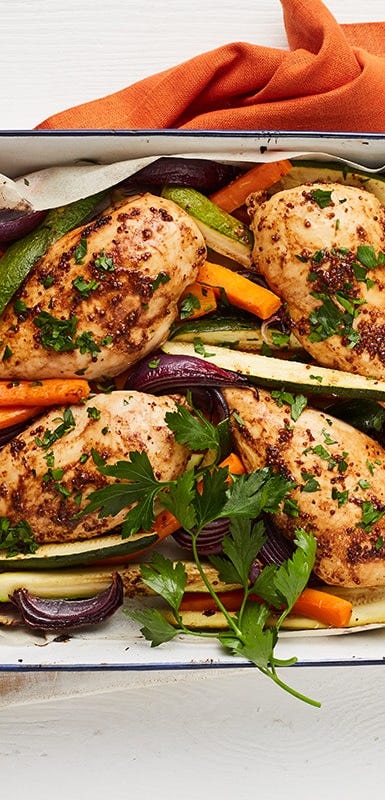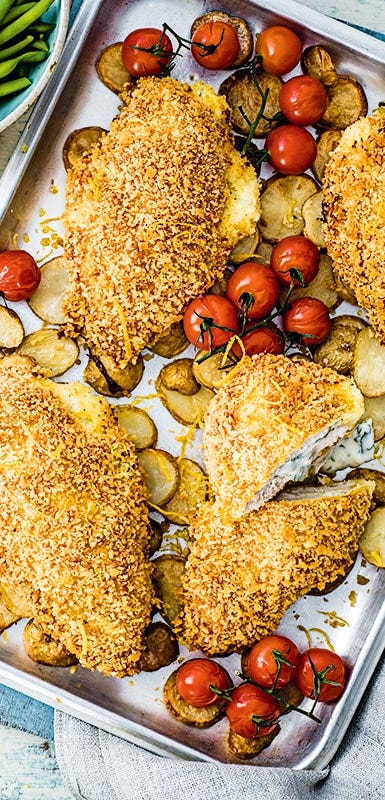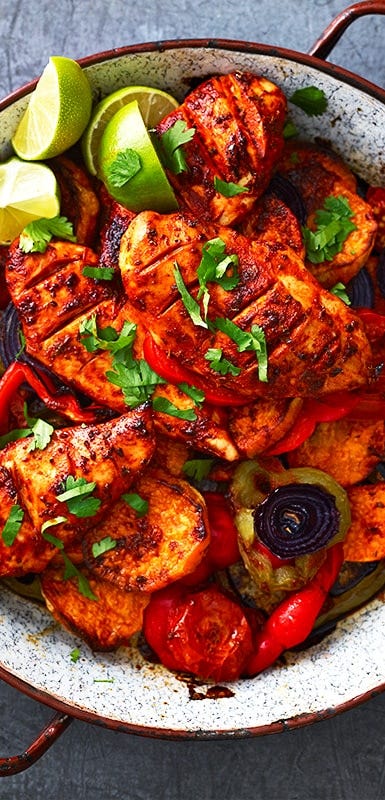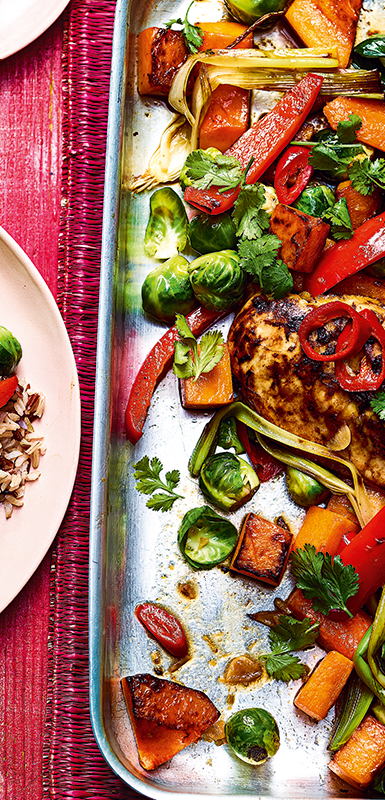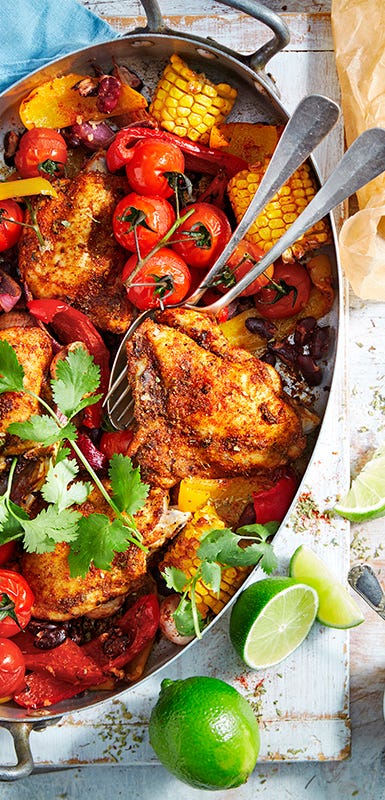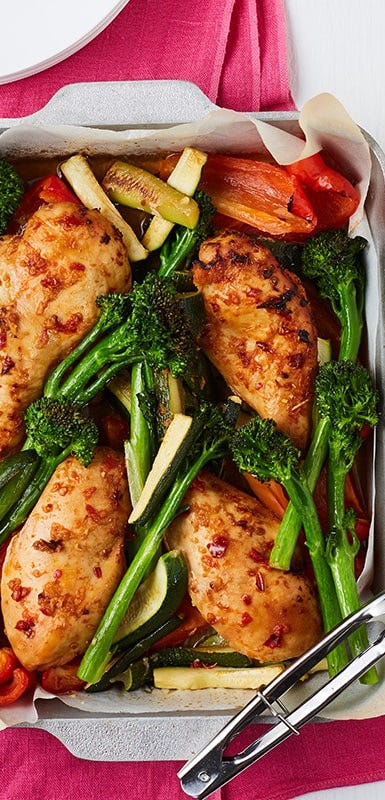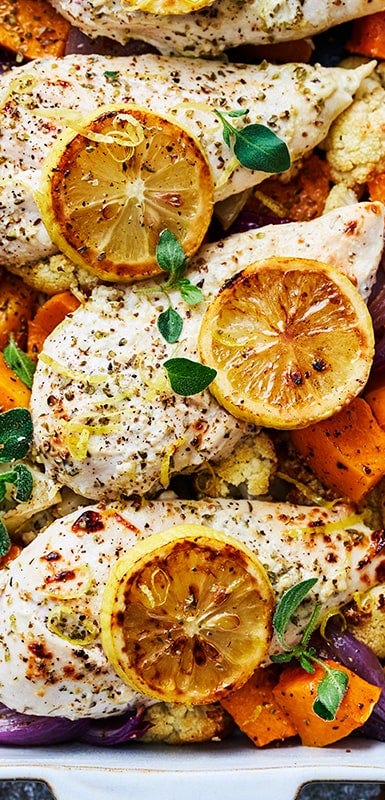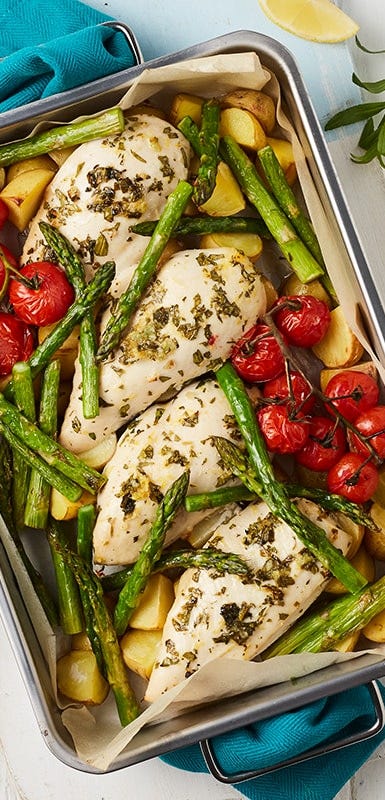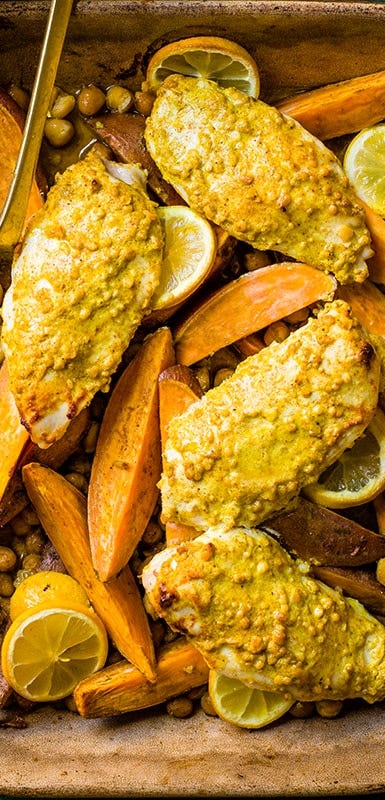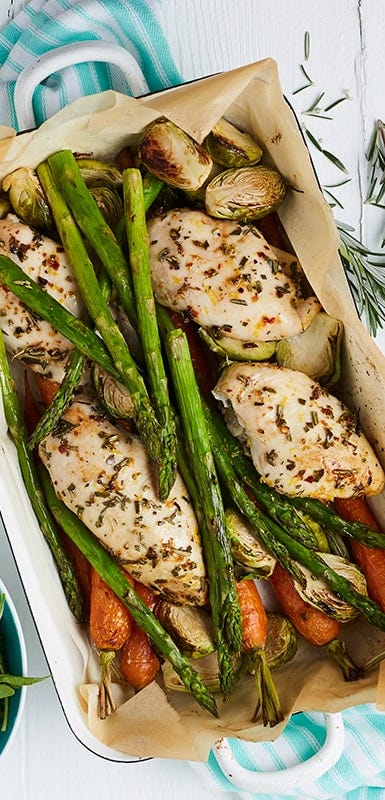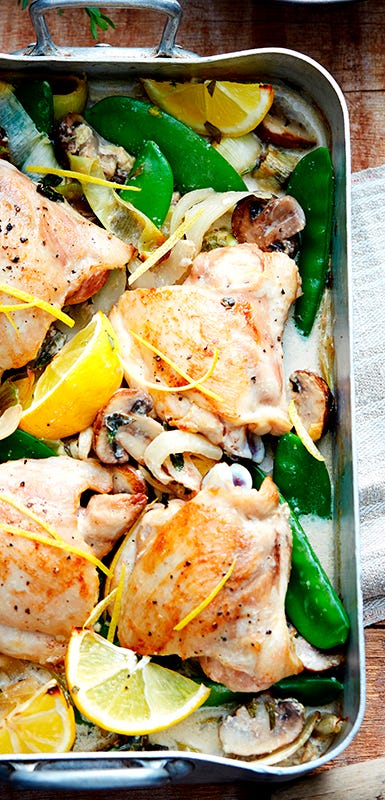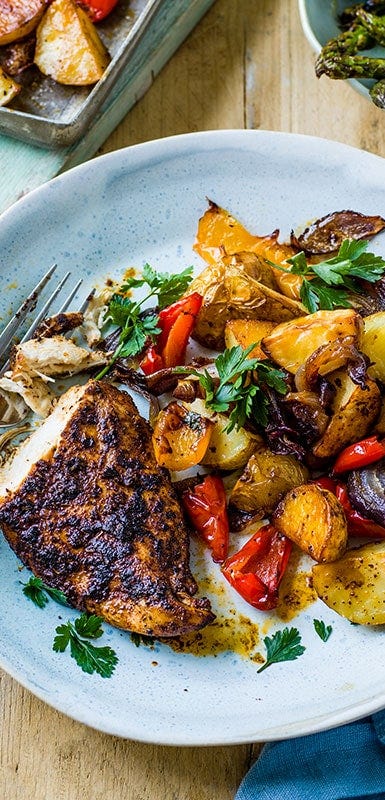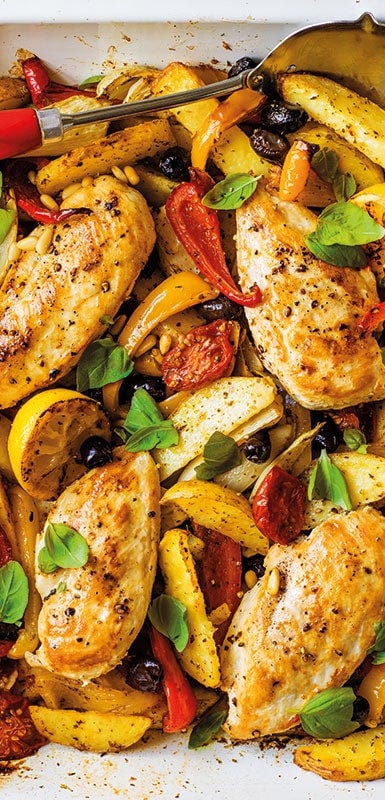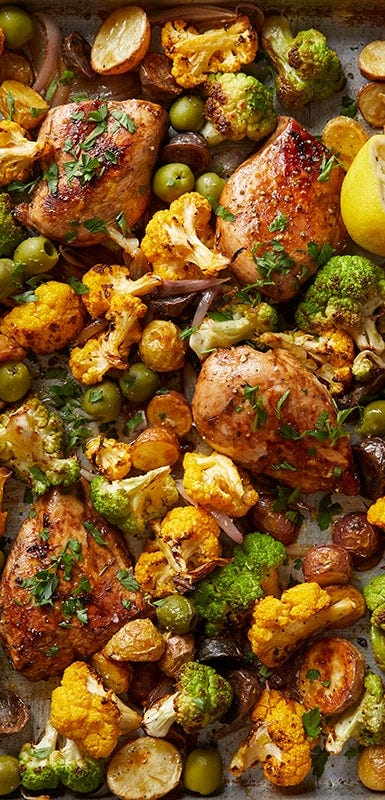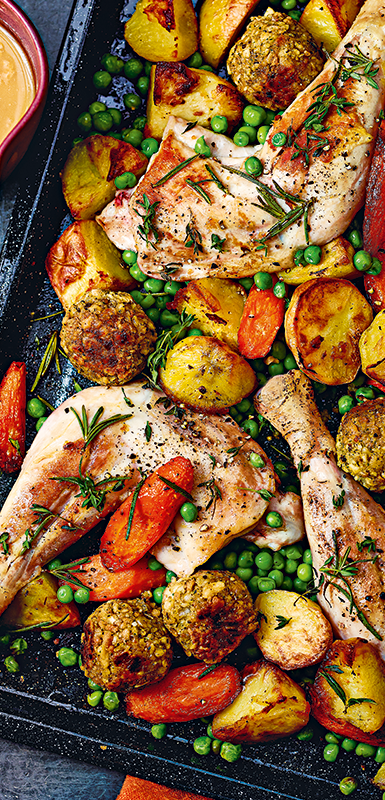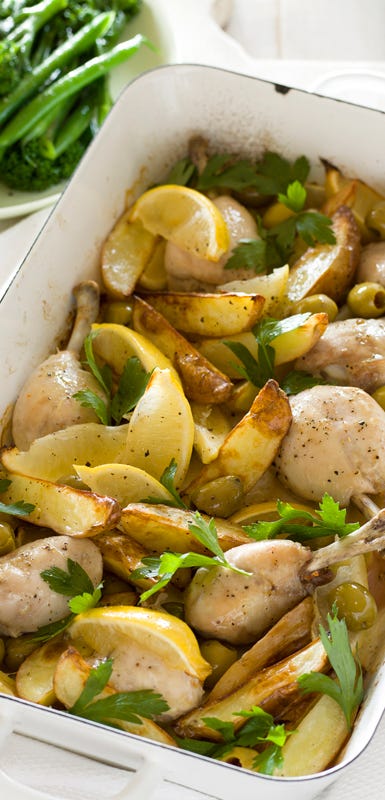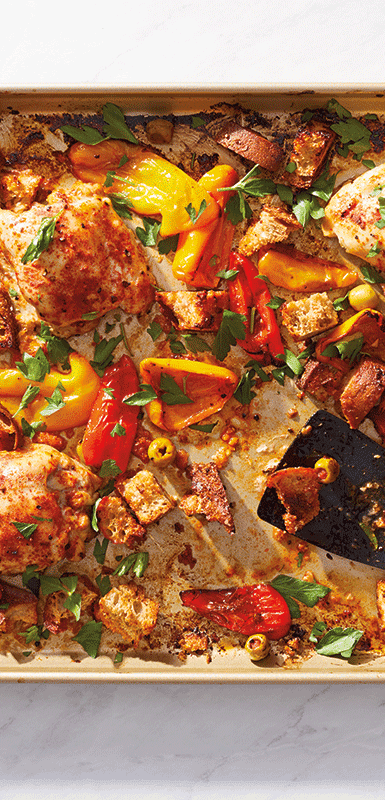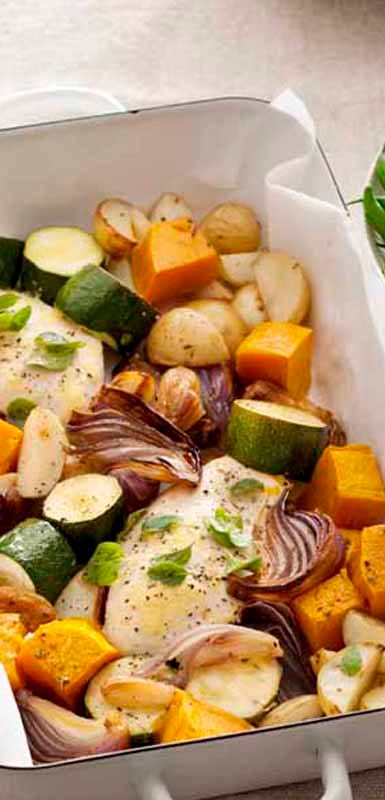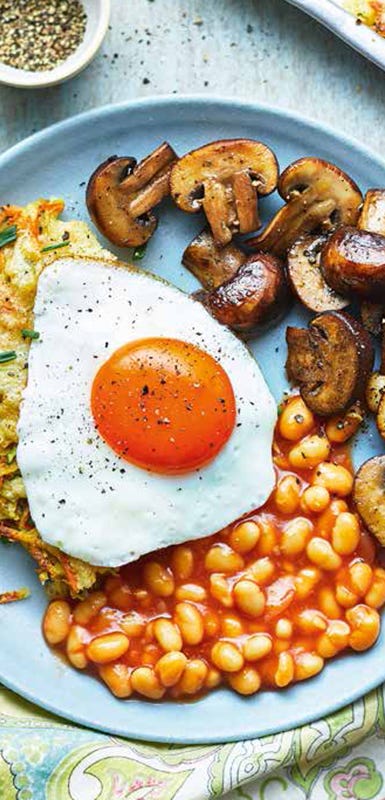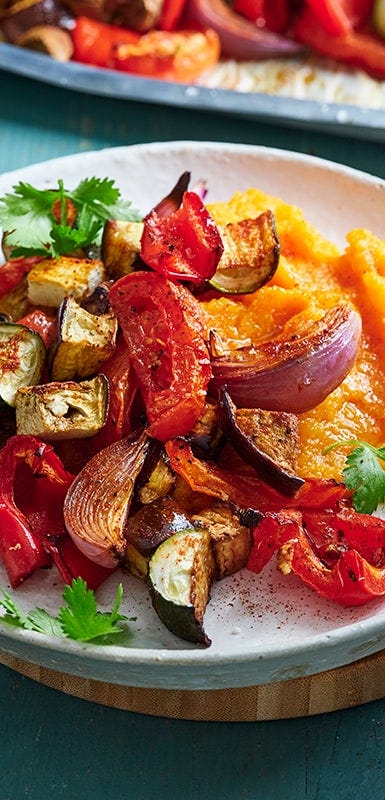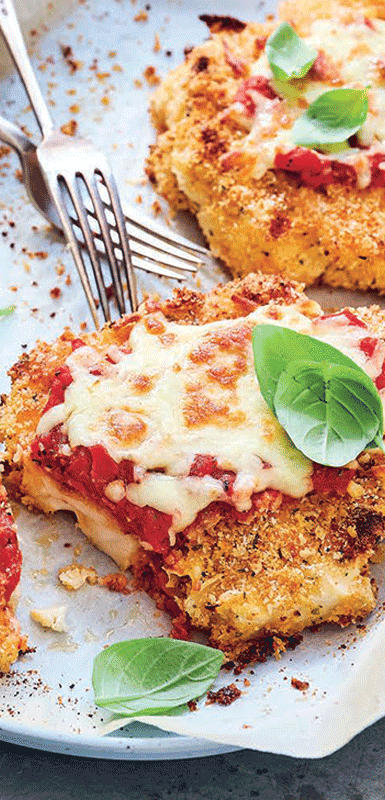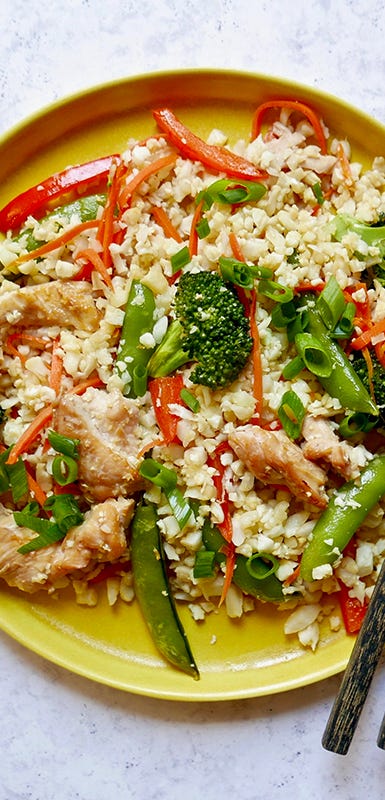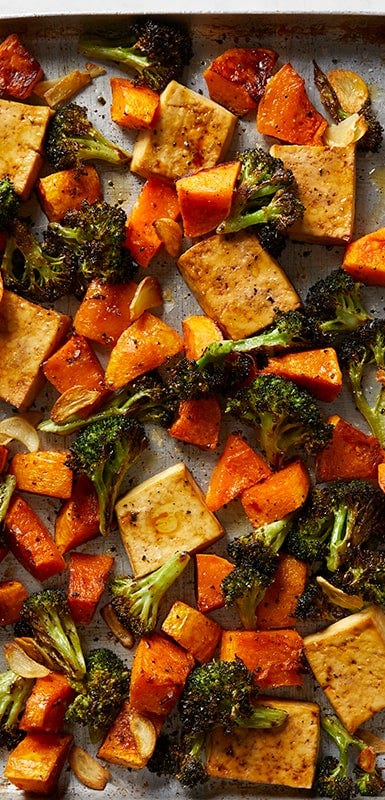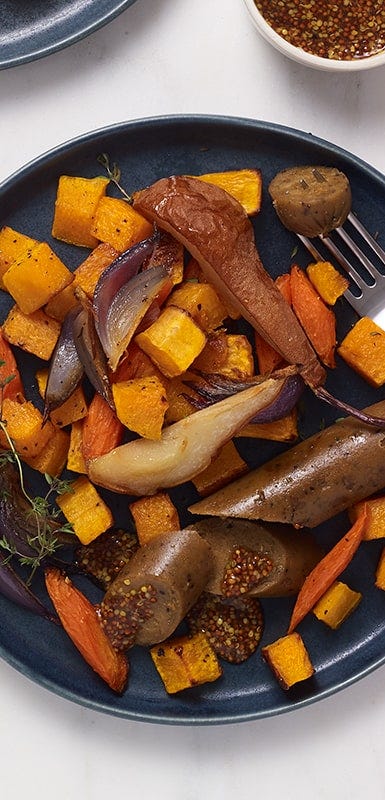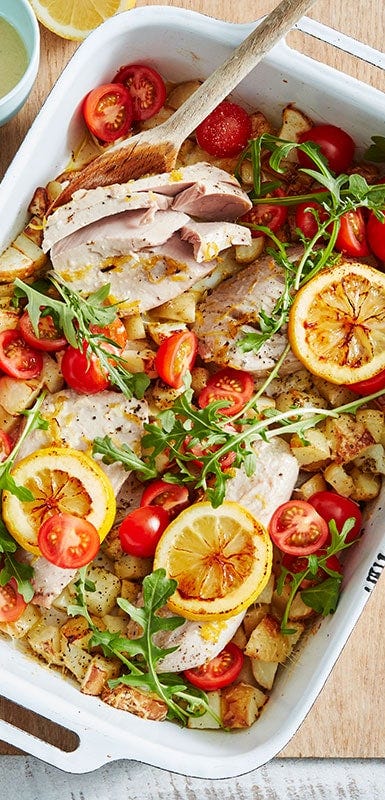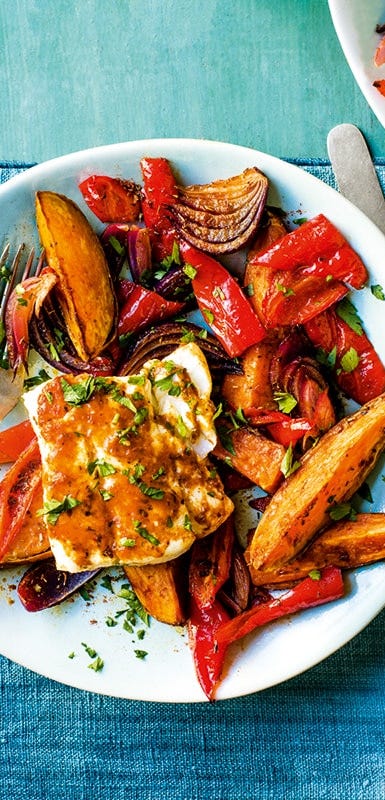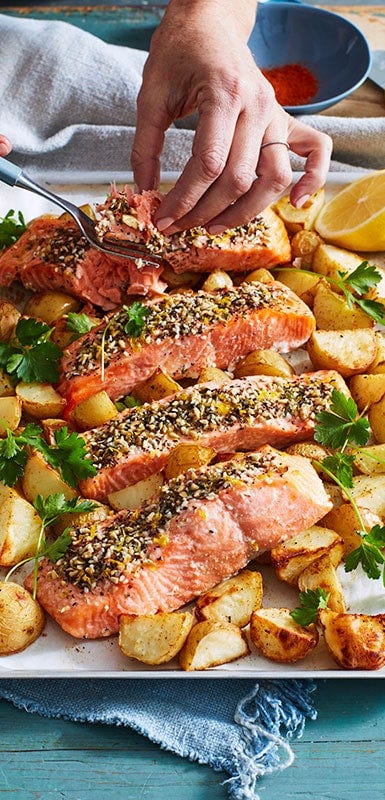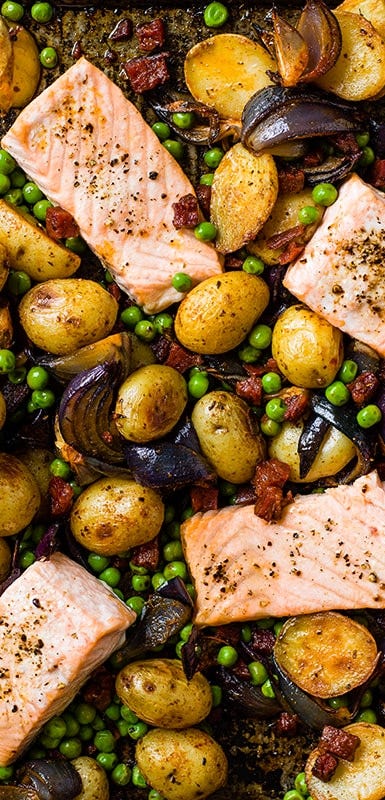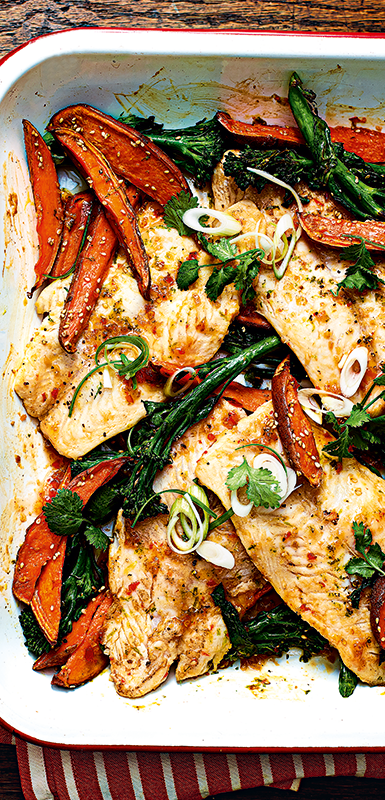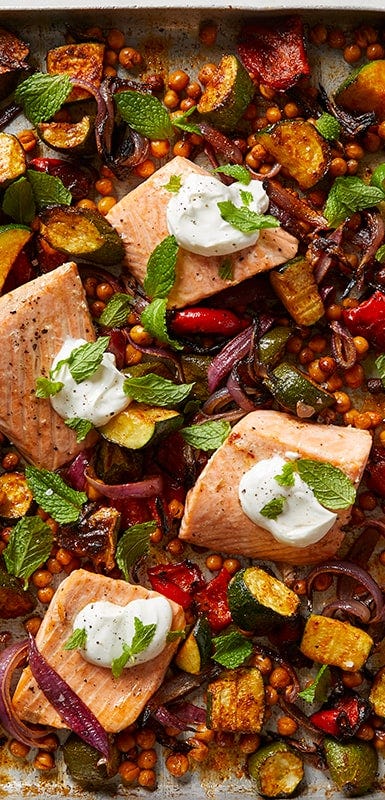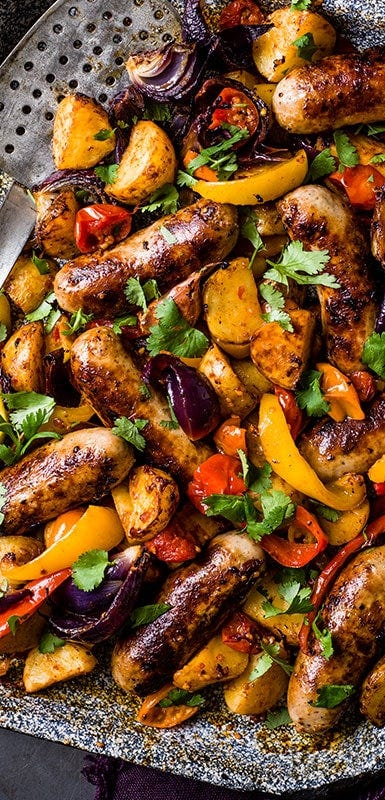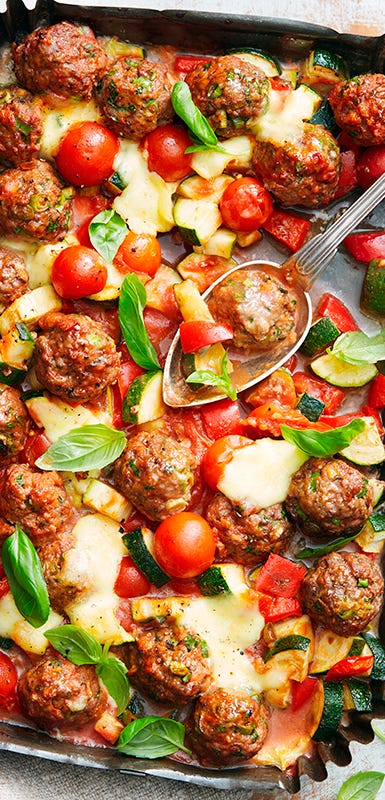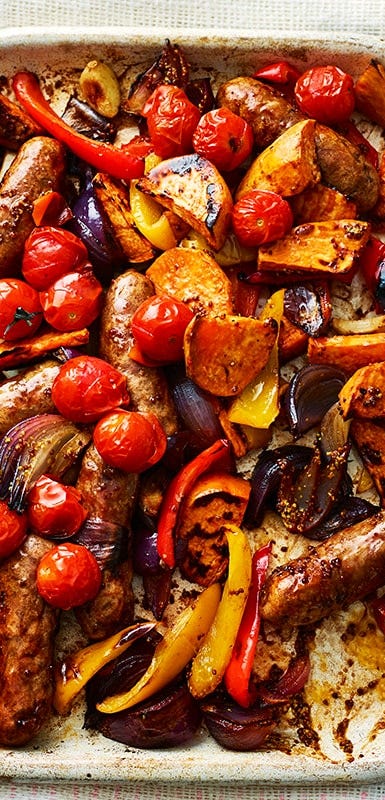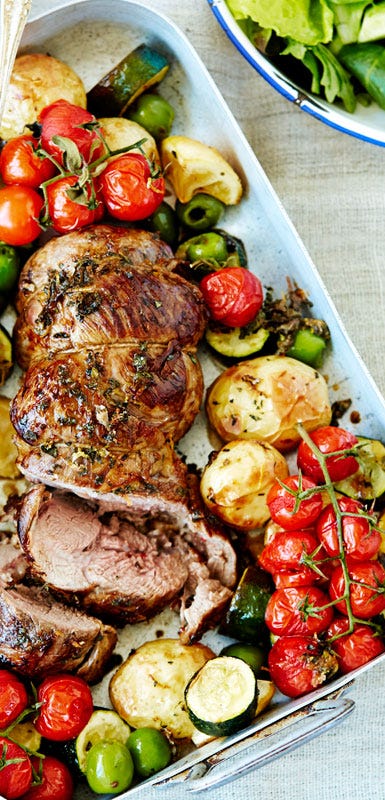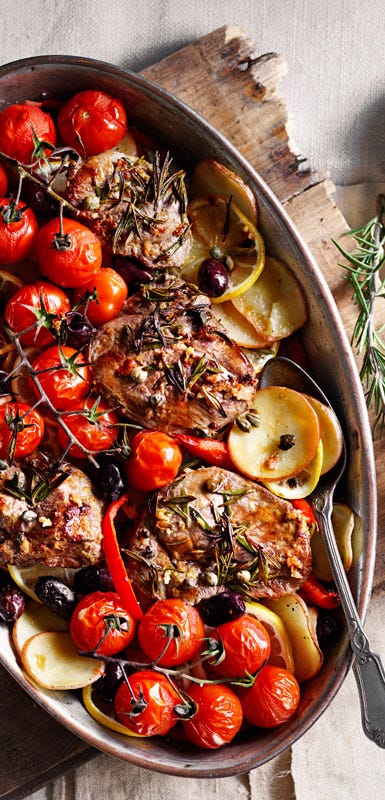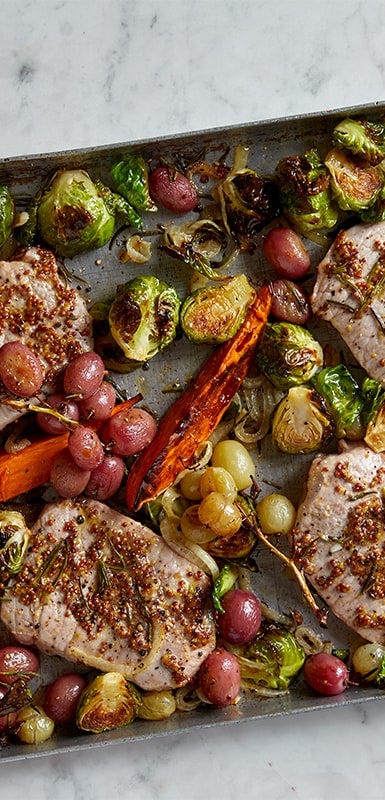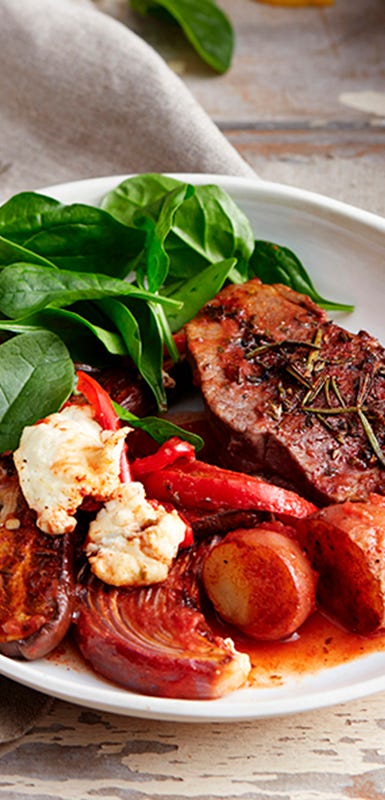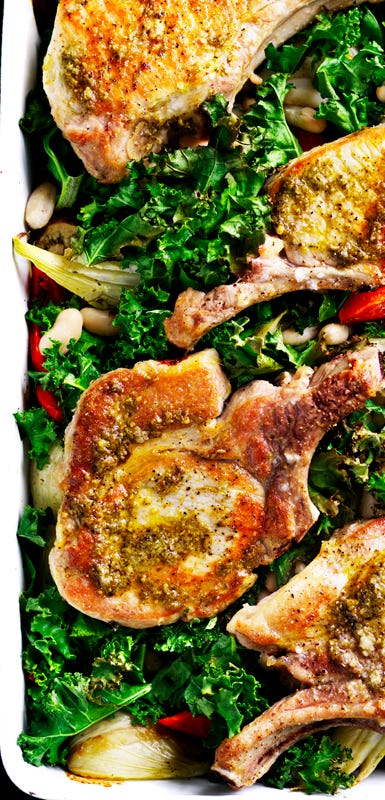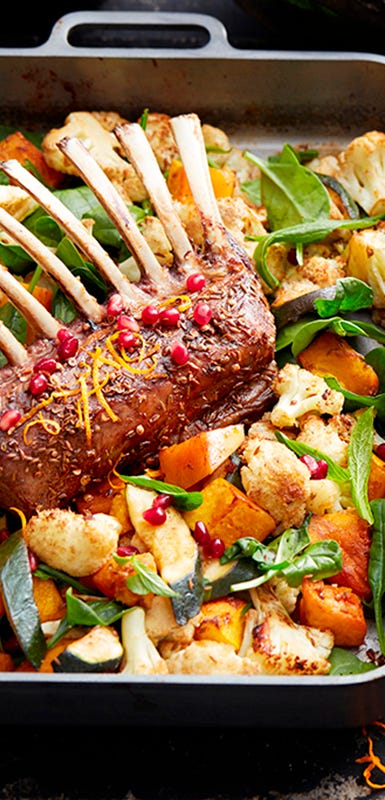39 tray bakes to try for dinner tonight
These one-tray wonders are easy to assemble and make delicious meals packed with healthy veggies.
By WeightWatchers
Published 15 October 2020 | Updated 17 October 2022
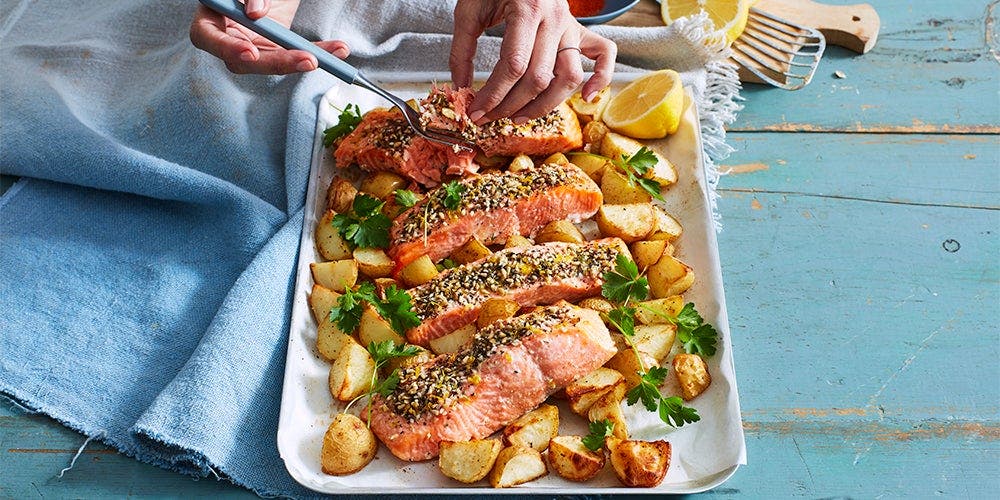

Not so long ago, baking trays were used for just one thing: baking biscuits. Then the world realised that you could easily cook a whole meal on one, and tray bake dinners became—and remain—a huge trend. What’s not to love? It’s one-pan cooking, and you can often line that pan so it just needs a quick rinse when dinner’s done. Plus, the pan’s lower sides allow heat to circulate all around the meat and veggies for lots of crispy edges and browning.
- When to use: Baking trays are best for quick-cooking proteins (like chicken breasts, pork fillet, or fish fillets) and vegetables. You’ll sometimes need to add the food in stages, since denser vegetables like pumpkin or potatoes might need a head start before, say, salmon fillets, join them in the oven.
- What to look for: When we say “baking tray,” we mean approximately 45-by-30cm pan with a 2.5cm rim all around. Opt for a premium, heavy gauge metal tray, which will hold up well without warping. Those with a non-stick coating tend to ensure an easier cleanup.
- How to clean: Wash your baking trays by hand with soapy water, scrubbing with a scourer as needed. Don’t be tempted to wash them in the dishwasher and to keep the coating on non-stick trays in tip top condition avoid using abrasive cleaners.
- How to store: For the most efficient storage, try arranging baking trays on their sides instead of stacking them one on top of another in a cupboard. If your kitchen cupboards don’t have dividers for this purpose, you can purchase wire dividers (even office supply ones will do) so the pans stay neatly “filed.”
Whether you’re after a meat, fish or veggie tray bake, we’ve got all recipes to suit. One of our member favourites is the balsamic and mustard chicken tray bake.

